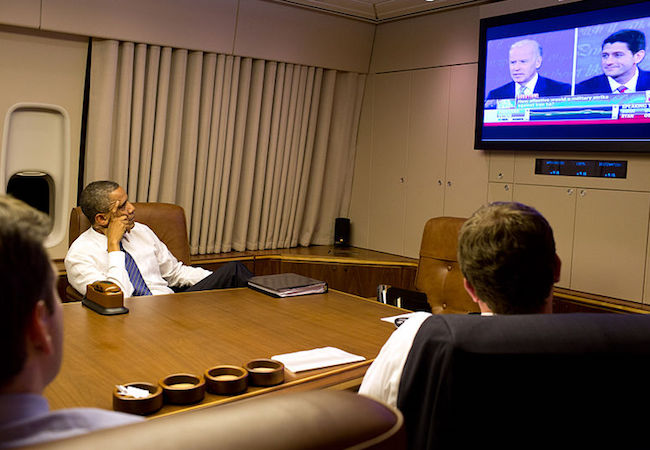
By Farid Shafiyev
After the 2016 US presidential elections, a plethora of articles emerged posing the question: why have people turned to alternative sources of information, instead of relying on ubiquitous and reputable media outlets such as the New York Times (NYT), the Washington Post (WP), CNN, etc.? During the 2016 presidential elections, these media outlets purported to be the guardians of truth and liberal values against racism, white supremacy and isolationism.
However, the mainstream media can hardly be characterized as a bastion of liberalism. Many outlets from this camp were elitist information bases which became a tool in hands of certain political forces or interest groups; or, as Noam Chomsky described it, the agenda-setting media hinged on certain power centers or privileged strata. Certainly, left-wing liberals such as Noam Chomsky never regarded the mainstream as a proponent of liberalism. In the face of hateful rhetoric during the US elections, the Democratic Party appeared to be a champion of liberalism. However, in reality – and particularly with Hillary Clinton – the Democrats had an agenda for a privileged class with some outreach for marginalized groups such as LGBT groups.
A similar trend can be observed in certain European countries where traditional Christian- and social-democrats ceased to promote any meaningful social or economic policy, while populists from right and left took the podium. The result of this process was not only to create a vacuum on the left, but also to provide gains for extremist groups on the right spectrum of domestic politics. Until recently, traditional social media such as Facebook and Twitter were platforms for liberals, revolutionaries, and anarchists (as we recall their role in the Arab Spring). In today’s America and elsewhere, social media was accused of facilitating the promotion of radical views and falsifications. Journalists and pundits coined a new term – “post-truth” – to describe the phenomenon of false news and an alternative radical vision of the societal problems. In this context, the Internet is increasingly presented as a medium for dangerous propaganda and social media as a threat to democracy.
The first problem with such representation is that the Internet is, as a matter of fact, only a medium – as is printed news. Both mediums can host polarized views. However, the Internet is much more diverse; therefore, marginal voices can access it and use it to disseminate their views. If the mainstream media would permit free political discourse, those extreme voices would be more effectively rebuffed on a visible podium – as can occasionally be observed at TV talk shows and debates.
For the observed phenomenon of polarized digital media with possible grave consequences for the so-called liberal world order, we should hold responsible not only extremists and populists but also liberals themselves. Liberalism became a banner under which certain groups found agreeable conditions in which to operate. I would like to illustrate this trend by analyzing foreign policy coverage of the mainstream media in the West. The effect of such coverage resulted in the wrong policy decisions – as many diplomats, experts, scholars and public advocates in the West rely precisely on those mainstream media outlets such as NYT, WP and CNN (or, at least, their opinions are strongly influenced by certain pool of major information sources).
One can look at Turkey as one example of this phenomenon. The mainstream media tends to focus on the rise in authoritarianism in this famously secular Middle Eastern country founded by Kemal Ataturk. However, in a quite twisted way, the fight against Kurdish terrorists and armed groups within Turkey and militia groups in Syria is portrayed as liberal thrust against the central governments. A few days before the horrible terrorist act in Istanbul on December 10, 2016, the New York Times ran an article titled Crackdown in Turkey Threatens a Haven of Gender Equality Built by Kurds, written by Rod Nordland. The author claimed that Kurdish political platforms, even including the terrorist organization PKK, gave greater freedom to women – unlike traditional patriarchal Turkish communities. Thus, the Kurdish political movement was portrayed as a progressive human rights and gender equality issue. The problem is that this claim has no scientific basis. It might be true that the gender situation in Kurdish majority areas in Turkey for the past decades has improved, but traditionally it lagged significantly behind other Turkish regions. Kurdish societies in the Middle East remain patriarchal – and this is especially notable in Syria and Iraq as compared to other Muslim communities. The presence of Kurdish female fighters does not translate into more rights in family affairs, just as the presence of female fighters among ISIS members does not translate into improved rights for women in that context.
The human rights issues of Kurdish minorities in the Middle East is a legitimate topic of concern, but it should be decoupled from terrorism and separatism. The old generation of the intelligence community knows that, for example, the PKK had strong links with the Soviet KGB.
The Western attitude toward terrorism in Turkey caused some suspicions regarding the goal of European and American policy makers; for example, condemning the attack on 10 December but not the organizations involved. The mainstream media continue to flatter Kurdish and other separatist movements in the Middle East and adjacent regions.
On Azerbaijan, the New York Times takes an even stronger position with Armenia-backed separatism in occupied Nagorno-Karabakh region (NK). Several American mainstream newspapers actually avoid a term “occupied”, despite the fact that this is how NK is described in the relevant UN Security Council resolutions. Instead, they promote its “de-facto independent status.” On December 6, 2016, the New York Times gave the floor to an American-Armenian writer Chris Bohjalian to promote the occupation regime in NK in an article entitled My Proud Pilgrimage to My Homeland. For the past twenty years, in which I have followed the New York Times articles related to Azerbaijan, the newspaper has never given the chance for the Azerbaijani view to be expressed.
In both cases, the description of the Times’ articles are utterly wrong; however, once it is published, the editorial board of the newspaper rarely gives the floor to the opposite opinion – limiting feedback from readers to very short ‘letters to editor.’ Promoting separatism in the Middle East and Caucasus Muslim countries became the standard mainstream view of American media. The consequences of that kind of policy from major Western powers are already grave, and may even be worse for the international community as a whole. I recently had a chance to discuss issue of separatism covered under a banner of liberalism in the National Interest. We should remember that migration from the Middle East is one of the main reasons for the rise of extremist political forces in Europe. With more instability and fragmentation in the Middle East, the population flows will be greater.
The mainstream media also failed to reflect on the fate of secularism in the region. Several states which had a history of promoting a secular form of governance and promoting greater gender equality happened to be in an adversary camp of Western leading nations. It is true their human rights record was poor, as with many others in the Middle East. However, destroying those countries without any vision for their future left a vacuum for radical branches of Islam. This ignorance resulted in the complete destruction of secularism, domination of radical Islam, and a threat to democracy in the West itself.
There are many other issues such as the Arab-Israeli conflict, about which Middle Eastern audiences are seeking greater discussion.
Ironically, the Western mainstream media such as CNN devotes less attention to the issues of government surveillance revealed by Julian Assange and Edward Snowden than Moscow sponsored Russia Today. The result of this one-sided coverage is that viewers turn to Al-Jazeera or Russia Today not only to receive news and views, but also to calm their anger over one-sidedness of the Western media.
Critics might challenge my selection of individual articles as the manifestation of the mainstream view. The constraints of a single article do not allow for more in-depth data analysis; however, for those who want to do it, I would make available my findings and accept countervailing opinions.
This is exactly what the mainstream should do and how it must transform. Instead of marginalizing readers and viewers – adding more bitterness to their anger – the mainstream media should become more accommodating, allowing broader discussion and arguments of dissidents. Then it is easier to inject criticism incrementally and defeat radicalism, while keeping a broader audience within reasonable mainstream opinion.




